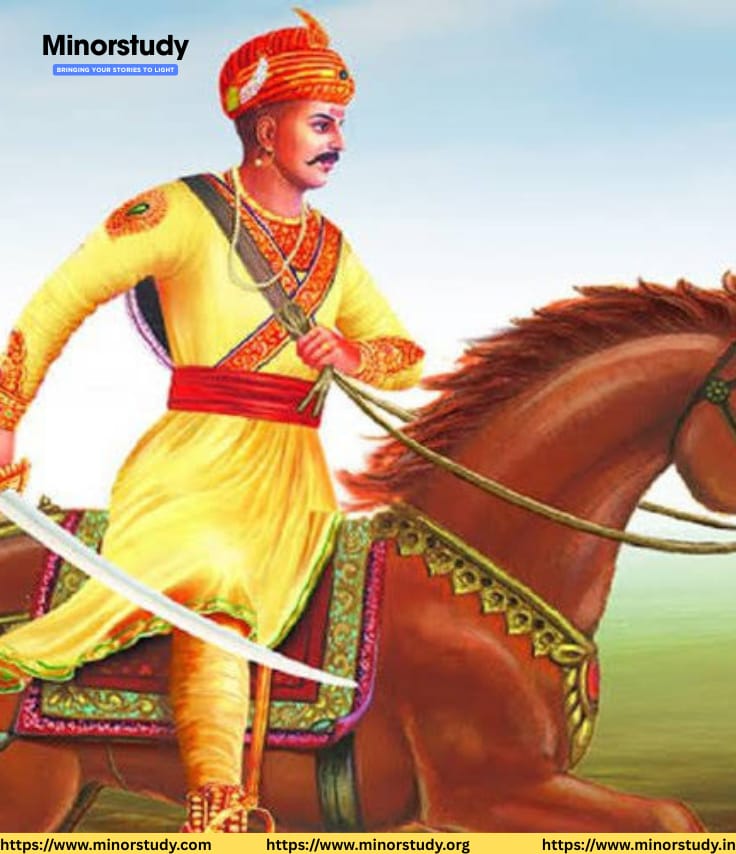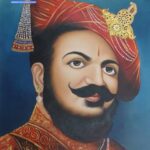All About Peshwa Bajirao: The Lightning Warrior Who Redefined Maratha Glory
Peshwa Bajirao: Peshwa Bajirao Ballal Bhat, popularly known as Bajirao I, was one of India’s most celebrated military commanders and visionary leaders. His swift, decisive campaigns reshaped 18th-century India and gave the Maratha Empire the strength to challenge the mighty Mughal Empire.
- All About Peshwa Bajirao: The Lightning Warrior Who Redefined Maratha Glory
- 📜 History of Peshwa Bajirao I: A Warrior from the Heart of Maharashtra
- 📌 Key Facts About Peshwa Bajirao
- 📅 Timeline of Bajirao’s Life and Major Achievements
- 🙋♂️ Frequently Asked Questions (FAQs)
- 1. Who was Peshwa Bajirao?
- 2. Why is Bajirao so famous?
- 3. What was his relationship with Mastani?
- 4. How did Bajirao die?
- 5. Was Bajirao a king?
- 🧠 Significance of Peshwa Bajirao in Indian History
- 🏛️ Cultural and Historical Observance
- 💬 Important Points to Remember
- ❤️ Wishing in the Name of Bajirao: An Ode to Greatness
- 🌍 Importance in Our Life and Society Today
- 🧾 Conclusion: Why Peshwa Bajirao’s Legacy Still Shines
Beyond the battlefield, Bajirao’s leadership, loyalty, and passion continue to inspire generations. His story is not just about wars, but about strategy, romance, statecraft, and legacy.
Let’s explore the true essence of Bajirao — his history, significance, achievements, and why his leadership still matters.
📜 History of Peshwa Bajirao I: A Warrior from the Heart of Maharashtra
Born on August 18, 1700, in Saswad near Pune, Bajirao was the son of Balaji Vishwanath, the first Peshwa (Prime Minister) of the Maratha Empire under Chhatrapati Shahu. At the age of just 20, Bajirao was appointed Peshwa, and thus began a legendary career that would shake the very foundations of the Mughal Empire.
🗡️ Bajirao’s Mission:
“Strike at the trunk of the withering Mughal tree, not just its branches.”
Bajirao’s reign as Peshwa lasted from 1720 to 1740, during which he never lost a battle — earning him the title of “Ranarangadada” (Hero of the Battlefield).
📌 Key Facts About Peshwa Bajirao
⚔️ Fought 41 battles and never lost a single one.
🏇 Famous for lightning-fast cavalry warfare — covering 500 km in 5 days.
💑 Had a romantic and historical love story with Mastani, a Persian-Muslim princess.
🧠 Was a master strategist who believed in mobility over fortresses.
🇮🇳 Expanded Maratha influence into Malwa, Bundelkhand, Gujarat, and even Delhi.
🛡️ Protected Hindu kingdoms from Mughal aggression.
📍 Died at the young age of 39 in 1740, but his legacy lives forever.
📅 Timeline of Bajirao’s Life and Major Achievements
| Year | Event |
|---|---|
| 1700 | Born in Saswad, near Pune |
| 1720 | Appointed Peshwa at age 20 by Chhatrapati Shahu |
| 1723 | Defeated Nizam-ul-Mulk at Palkhed |
| 1731 | Married Mastani, sparking royal controversy |
| 1737 | Maratha army reaches Delhi, humiliates Mughals |
| 1740 | Dies near Narmada River while on a military campaign |
🙋♂️ Frequently Asked Questions (FAQs)
1. Who was Peshwa Bajirao?
He was the second Peshwa of the Maratha Empire, known for his brilliant military leadership and expansion of Maratha power.
2. Why is Bajirao so famous?
Because of his unbeaten military record and strategic brilliance, which significantly weakened the Mughal Empire.
3. What was his relationship with Mastani?
Bajirao married Mastani, a noblewoman of mixed Hindu-Muslim heritage, which caused social and political unrest among conservative Maratha families.
4. How did Bajirao die?
He died of sudden fever and exhaustion near Raverkhedi (present-day Madhya Pradesh) in 1740.
5. Was Bajirao a king?
No, he was the Peshwa (Prime Minister) under the Chhatrapati but wielded more real power than the king in his time.
🧠 Significance of Peshwa Bajirao in Indian History
1. Master of Mobile Warfare
Bajirao pioneered rapid cavalry tactics that allowed his forces to strike fast and deep into enemy territory — a method ahead of his time, compared to the sluggish Mughal armies.
2. Rise of Maratha Power
Under his leadership, the Maratha Empire expanded beyond Maharashtra, laying the foundation for it to become the dominant power in India by the late 18th century.
3. End of Mughal Supremacy
His victory in Delhi (1737) proved that the Mughal capital was vulnerable, striking fear and humiliation into the Mughal court.
4. Romantic Legacy
His love story with Mastani is still remembered — a symbol of love that defied caste, religion, and politics.
🏛️ Cultural and Historical Observance
Though there is no official Bajirao Jayanti, his life is celebrated through:
🎭 Stage plays and TV serials, especially in Maharashtra.
🎬 Bollywood films like Bajirao Mastani (2015) brought his legacy to the youth.
📚 Biographies and school history books that highlight his importance.
🏰 Shaniwar Wada, the grand palace he built in Pune, stands as a memorial.
💬 Important Points to Remember
| Topic | Detail |
|---|---|
| Leadership | Became Peshwa at 20 |
| Battles | Fought 41, won all |
| Strategy | Fast-moving cavalry warfare |
| Expansion | Maratha rule beyond Vindhyas |
| Romance | Love story with Mastani |
| Architecture | Built Shaniwar Wada in Pune |
| Legacy | Known as the “Napoleon of India” |
❤️ Wishing in the Name of Bajirao: An Ode to Greatness
Though Bajirao lived centuries ago, his passion, vision, and valor continue to inspire the youth of India. On any day, we can honor and wish:
“May we all have the courage of Bajirao,
The clarity of a warrior,
And the conviction of a lover.”
His life is a blessing to Indian history — a story we can celebrate through books, films, and remembrance.
🌍 Importance in Our Life and Society Today
🧑🎓 In Education
Bajirao’s story teaches military strategy, leadership under pressure, and national unity.
🧑💼 In Professional Life
His approach to problem-solving, logistics, and decision-making is studied even in modern leadership frameworks.
🧑🤝🧑 In Society
He challenged social norms by marrying outside his caste and religion, making him a figure of inclusivity and boldness.
🏛️ In Governance
His ability to lead with loyalty to a higher cause rather than personal ambition is a valuable lesson for politicians and administrators.
🧾 Conclusion: Why Peshwa Bajirao’s Legacy Still Shines
Peshwa Bajirao was not just a warrior — he was a visionary leader, a compassionate lover, and a brilliant statesman. In just 20 years, he changed the course of Indian history, weakening the Mughals and paving the way for Maratha dominance.
His legacy:
Proves that age is no bar to greatness.
Shows how honor and intellect can win battles.
Reminds us of the power of love and inclusion, even in conservative societies.
🌟 “Bajirao didn’t just lead the Marathas — he led an idea of India that was fast, fierce, and free.”








